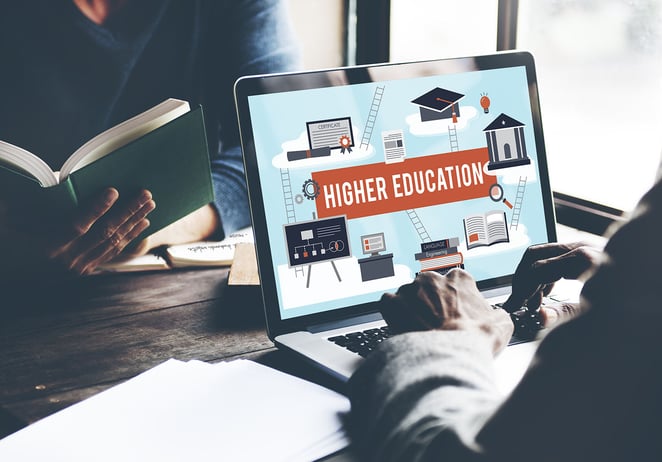Tailored services, customization, personalization. In the age of Amazon and Spotify, these buzzwords are par for the course and set consumer expectations at a high level. Personalization has infiltrated most sectors, with customers affording particular value to unique experiences and one-of-a-kind products configured just for them. In hospitality, hotels are making it easier for their guests to customize their stays by giving them control over the content of their mini bars, pillow and blanket selection, and this is just the beginning. What about education?
Personalization is fast becoming the baseline expectation during this digital education revolution, especially among higher education’s main target audience, young adults. Universities and colleges are under constant pressure to adapt to both the realities of society and the future workplaces of their graduates. As such, the need for social skills training has been embraced by those in tune with developments, new teaching technologies are being leveraged and a preference for an “experiential way of learning” has been identified. Nestled among current trends in education and a need for digital transformation in education, we find institutions grappling with the concept of personalized learning.
What is personalized learning?
With traditional education failing to capture the attention and fuel the passion of today’s students, personalized learning offers an alternative to the outdated one-size-fits-all approach. This bespoke, student-led model is built around personalized learning plans, which ensure that students’ interests, strengths and weaknesses are accounted for and that they are able to assume ownership of their own learning progress.
There are various approaches to personalized learning. These may focus on enabling students to study in line with their own learner profiles, or provide more flexibility by making learning materials readily available and allowing students to choose when and where they want to study. They may tie in unique experiences, such as tailored industry exposure or study abroad placements. To give you an overview, EHL Insights has rounded up both the features and benefits of personalized learning.
INVEST IN EDUCATION TOOLKIT
With this 10-step process, you will have all the tools you need
to master the critical areas of a successful school.
Features & benefits of Personalization in Education
- Enables students to align their learning experiences with their abilities, interests and goals.
- Provides the framework for students to work independently, at their own pace and, in some instances, on their own schedule.
- Prioritizes the needs of students as individuals in curriculum and material development.
- Supplies learning materials in several formats, accessible on various devices, and uses different delivery methods to ensure students can tap into their own learning styles to propel themselves forward, no matter their circumstances.
- Encourages students to be active learners, take initiative and monitor their own progress.
- Includes ongoing assessments, many of which can be self-assessments, to reinforce learning and identify learning gaps early on.
- Provides teachers with real-time data on student progress, empowering them to intervene if necessary.
- Allows for the incorporation of technological solutions to best cater to demand.
- Engages student attention and heightens motivation, likely reducing dropout rates.
No matter what form personalized instruction takes, it is evident that it goes hand in hand with a role shift for the respective educators. Clearly, even now, professor, lecturer and teacher roles are varied and extend beyond covering the subject-matter curriculum to guiding students towards critical thinking or adeptly applying theory to practice, for instance. The dawn of personalized learning, however, sees educators taking more targeted action to support and foster students where necessary, providing true human added value by explaining complex topics in a relatable way and guiding students through their learning progress in more coach-like manner. This results in a more personal relationship between educator and student.
How can courses be customized?
Even personalized instruction has to meet standardized criteria if it is to lead to a recognized qualification. Any customization therefore has to be well thought-out and implemented. This includes making sure much-heralded social skills are conferred, despite a possible greater reliance on digital materials. Potential scheduling flexibility still has to allow for sufficient structure and not become an impediment to those learning formats that require attendance from all students. In addition, educators must be able to maintain an overview of their students if they are to provide them with adequate support. Successful personalization therefore relies upon a careful balance of fragmentation and coherence.
Achieving this is likely to involve incorporating different learning opportunities in customizable modules, such as project-based assignments that give students the freedom to choose their own topics. It may even be as far-reaching as designing different learning pathways that lead to the same qualification, offering alternative modules, career-related internships or dual-enrollment opportunities.
Students may be asked to give their opinions on different lesson formats and contribute their ideas to curriculum design. Self-assessments may be used not only as a gauge of the status quo, but also as a means to exercise reflection and metacognition, giving students a platform to vent their own justifications to improve knowledge retention. Digital tools may be used to enhance efficiency and effectiveness – for example as part of a blended-learning environment bringing together face-to-face instruction and targeted digital materials.
What tools and learning technologies might be useful?
Personalizing any service requires reliable information, and higher education is no exception. Thinking to the future, minutely tailored study programs would build exacting student profiles from personal data. Big data and artificial intelligence could be used to tease out student preferences in an effort to accurately match higher education supply with demand. Naturally, any talk of personal data is immediately followed by data privacy concerns and great attention would have to be paid to the secure and ethical handling of data.
Provided the respective obstacles can be overcome - and that any automated output can be monitored and appropriately interpreted before use - tech could open up a vast array of additional possibilities that would feed into a personalized learning landscape, for example:
- Chatbots to answer FAQs, even outside of office hours.
- Automation of repetitive tasks and routines to free up teacher capacity for one-to-one interaction.
- Intelligent mood tracking to help students manage their mental well-being.
- AI-based learning systems for the instruction of rule-based subject components.





